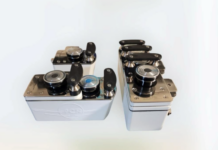By Alicia Betancourt
Imagine you mailed a check to pay a bill, and someone stole it. The thieves altered it, cashed it and cleaned out your account. If you catch it quickly, you can contact the bank and reverse the charges, but sometimes you can’t. If the thieves cashed it through a second bank, you may have to wait weeks for that bank to investigate.
Most of us are not using checks regularly. But are you still making payments by mail to medical providers or insurance companies? Now is an excellent time to stop. According to the Financial Crimes Enforcement Network, check fraud tied to mail theft is up 30% nationwide. There are several types of check fraud.
Counterfeit checks: Counterfeit checks involve the creation of fake checks that closely resemble legitimate ones. Fraudsters use advanced printing techniques to replicate bank logos, watermarks, and other security features, making it difficult for individuals and businesses to discern the authenticity of the checks.
Forged signatures: Forging signatures is a classic method of check fraud. Criminals may steal a checkbook and sign the owner’s name without their knowledge. Modern technology has made it easier to mimic signatures, making this form of fraud prevalent.
Altered checks: Altering checks involves changing the payee’s name, the amount or other details on a legitimate check. Criminals may use chemicals or other methods to erase or modify the ink, turning a genuine check into a fraudulent one.
Account takeover: Account takeover occurs when fraudsters gain unauthorized access to a bank account, allowing them to issue fraudulent checks or manipulate existing ones. This scam often involves phishing, identity theft or exploiting weak online security measures.
The best prevention is to stop using checks and use a credit card instead, providing much more protection from fraud. Safeguarding checkbooks and other sensitive financial documents is crucial. Locking them securely away helps prevent unauthorized access and reduces the risk of physical check theft.
Find alternative ways to pay. I have noticed that more companies provide a QR code link to pay online. Check the bill for online instructions. If you need to pay an individual, ask if they accept electronic payment through bank transfer or a cash app. You can call and request phone payments if you have a bill without online payment options.
If you’re using the mail or a carrier, take it directly to them and get a tracking number. Experts advise using a black gel pen to write checks; it is the hardest to “wash” out. If you send a check, follow up and ensure it arrives. Stop payment if it takes more than a couple of weeks.
Lastly, keep a low balance in your checking account and link a savings account. Thieves will have access to fewer funds if your account gets compromised.
Call your bank immediately if you suspect a check has fallen into the wrong hands. Then file a police report.
As technology advances, so does the sophistication of check fraud schemes. Staying vigilant, adopting enhanced security measures and embracing digital alternatives are essential steps in mitigating the risks.



























